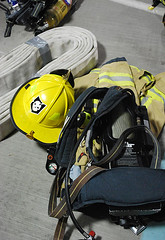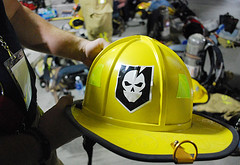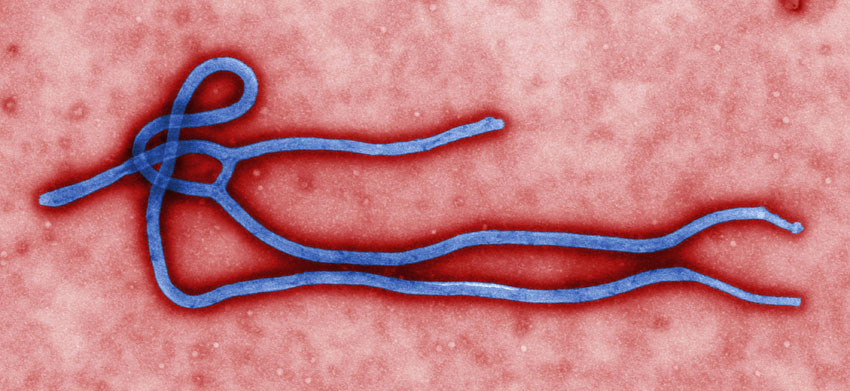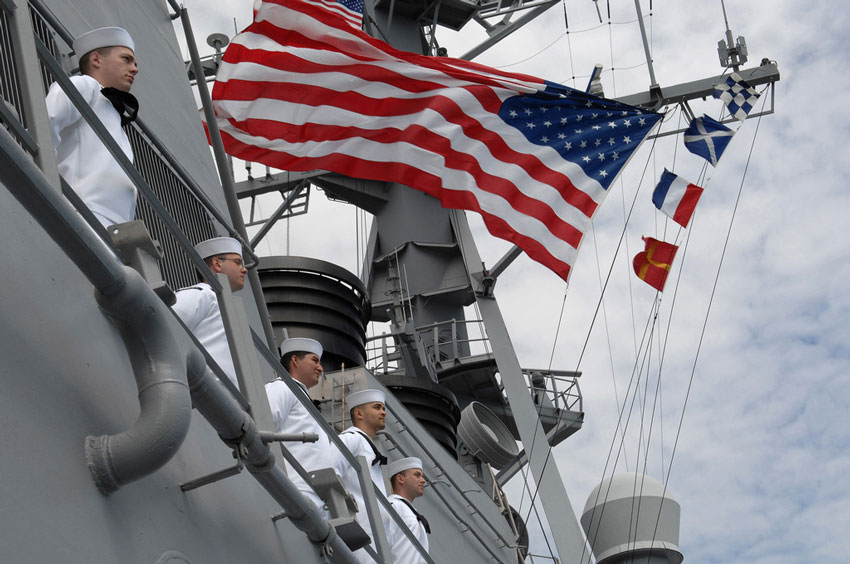Remembering 9/11 with the Nashville Stair Climb
Remembering 9/11 with the Nashville Stair Climb
September 11, 2001 is a day in U.S. history that will never be forgotten. Over 2,700 people were killed that day, including 343 firefighters. These firefighters, without hesitation, ran straight into the World Trade Center to begin evacuations, as well as fire fighting operations on the upper levels.
Firefighters wearing full turnout gear, self contained breathing apparatus (SCBA), and carrying hose and tools marched up 110 floors to reach the top. These firefighters never made it out of the building alive.
While on shift one afternoon in July, a fellow brother approached me about the Nashville Stair Climb (previously announced on ITS Tactical). The event would be a memorial to the 343 firefighters that gave their lives on 9/11.
Before I even had a chance to think about possibly doing this event I was on the website signing up. The climb had two main priorities: to memorialize the 343 fallen brothers and to promote firefighter wellness.
Training for the Climb
My training started immediately during the next shift. My first honest thought on climbing 110 stories was “This will be cake…”
Several years ago we had built a two-story prop behind our station. I hit the stairs one day in just a t-shirt and shorts, quickly running through 40 flights before heading to lunch. My partner who had signed up with me and I both thought that this event would not be too hard at all. The very next shift, being over-confident, I threw on all my turnout gear and hit the stairs once again. Thirty flights into my climb I quickly realized that my first impressions were completely wrong; this was going to be a lot tougher.
My partner and I began to train. Every shift we would get into our gear, grab an air pack, and knock out as many flights as we could. We would usually do this around 10 p.m., but Tennessee’s summer months had been dreadful and the temperatures were still in the mid-90 degrees Fahrenheit during our training. Shift-by-shift we got in more and more flights of stairs. We learned that not only would this event be physically demanding, but mentally challenging as well.
The same movement of just climbing stairs was very boring. I began to collect music to keep on my phone so that I could have something to listen to while climbing. We also learned little tricks, like holding the rail, which both gave us better balance and seemed to relieve some of the stress of climbing.
Intensifying the Training and Issues with Health
By mid-August we were in full swing, training for the event. We had our motions down to a science and our music to keep our minds busy. We were knocking out flights quicker and quicker. I challenged myself to start training with a high rise pack (consisting of a 50 foot section of 2.5 inch hose). I knew that the firefighters on 9/11 had to do the same. Once again I started out with only 20 to 30 flights; I was now carrying just over 100 pounds of gear and equipment. Losing weight and feeling better, I had become addicted to working out.
I decided to start doing CrossFit workouts in the afternoons before the stair climb. Over the course of a workday, I would do a light workout in the morning (required by my department), a CrossFit workout after lunch, and a stair climb at night. Being on shift, I knew I had to keep myself hydrated. At any moment I could have a call. I began to have the medic on shift check my vitals and run a bag of saline through me after I climbed. I was feeling great.
My workouts quickly caught up to me. I began to feel very sore. Eventually, I noticed blood in my urine. After getting checked out I was diagnosed with rhabdomyolysis.
I got myself back on track to being healthy and started to hit the stair again. Once again, I was feeling great. I decided that during the week of the event I would take it easy and rest up. Some more personal issues arose, which hindered my ability to train for two weeks. I still felt very confident in my abilities and just shook it off.
Day of the Climb
 The morning of the event, Sept. 11, 2010, myself and four other firefighters from my department met up at the building where the event was to be held. Teams were randomly put together into groups of seven. With only five members in our group, we were given two other firefighters (one from New Jersey and one from Morristown, Tenn.).
The morning of the event, Sept. 11, 2010, myself and four other firefighters from my department met up at the building where the event was to be held. Teams were randomly put together into groups of seven. With only five members in our group, we were given two other firefighters (one from New Jersey and one from Morristown, Tenn.).
I had never seen so many firefighters in one place. The parking garage was full of them, all with gear and cameras. The mayor was there, as were the news anchors who were covering the event.
The morning began with a speech from Mayor Karl Dean and the event coordinator Josh Smith. We all took a moment of silence to remember the day that we were attacked. A local group of firefighters also played “Amazing Grace” on the bagpipes and drums. It was a very emotional and somber time.
My team was the 15th in line to begin climbing. When our time drew near, we were called to get dressed and be ready. The team dressed in full turnout gear and SCBA. Two of us carried hose packs. Nashville Fire Department’s Chief awaited us at the bottom level stairs and shook each of our hands, saying “Good luck gentleman, and thank you.”
Starting the Climb
 We began our ascent. There were 343 firefighters climbing in full gear in the stairwell. It did not have air conditioning and was not ventilated. The temperature must have been above 90F. For us, the first 15 flights seemed to be the hardest. We had started with a quick pace, but quickly realized that we needed to slow ourselves down if we were to have the endurance to finish.
We began our ascent. There were 343 firefighters climbing in full gear in the stairwell. It did not have air conditioning and was not ventilated. The temperature must have been above 90F. For us, the first 15 flights seemed to be the hardest. We had started with a quick pace, but quickly realized that we needed to slow ourselves down if we were to have the endurance to finish.
Inside the stairwell were hand drawn pictures from children posted on the walls: “You can do it!”, “Thank you!”, “You’re almost there!”, “You’re my hero.” All words of encouragement to help make the trip seem more tolerable. Visitors were allowed to wait just outside the stairwell on the 22nd floor. When we passed by this floor the crowd cheered and cried, saying “you guys are great!”, “keep it up!” and more encouraging words. The feeling was amazing. We were motivated to make it all the way.
We reached the 29th floor. This was the building’s top floor. From there, we were led to a freight elevator and taken back down to the lower level garage to start again. There was time between the wait for the elevator and the wait to get back in line to rest for a few minutes. Once again, we passed the Fire Chief, got our handshakes and began to climb.
For the second trip up we had left one of our hose packs behind. It had been too much to carry. Although disappointed, we knew that the purpose of this event was just to reach the top, not to be the one who carried the most.
We were given bottles of water at almost every corner we turned. Many bottles we drunk, but most were poured into our helmets and coats. This trip up did not seem as bad as the first. I believe that we had gotten into our rhythm and the right pace. At the top we again got to rest in line for the elevator, and once again at the lower garage while waiting to get back in line.
The third trip up was probably the hardest mentally. We knew that we were close to the end but still had several flights to go. When we reached the top we noticed that there were still teams that were just now starting their climb. At this point we were all encouraging each other, grabbing our Fire Department City of New York (FDNY) member’s badge, and digging down deep. We had only 22 more flights left.
Finishing at the Top
 During our last time at the lower level, we took a little longer rest (maybe ten minutes). I had taken off my turnout coat and draped it over my air pack on my back. We started off on the last leg of the climb, this time with a fast pace, clearing several flights very quickly. We stopped once on the 15th floor to catch our breath and then pushed on to the 21st floor. There we gathered close together, said “great job” to each other, and headed to the finish line on the 22nd floor.
During our last time at the lower level, we took a little longer rest (maybe ten minutes). I had taken off my turnout coat and draped it over my air pack on my back. We started off on the last leg of the climb, this time with a fast pace, clearing several flights very quickly. We stopped once on the 15th floor to catch our breath and then pushed on to the 21st floor. There we gathered close together, said “great job” to each other, and headed to the finish line on the 22nd floor.
The announcement was made aloud: “Team 15 has finished.” The crowd of visitors erupted into cheers, screaming and crying. Cameras were going off like strobe lights. The feeling was better than any other, especially knowing what had just been accomplished and what it stood for. We gathered for pictures and spent time with family on the top floor, congratulating the other teams as they finished.
Remembering FDNY Firefighters
My FDNY firefighter was James Pappageorge, a 27-year-old from Queens, N.Y.. James had worked as an Emergency Medical Technician with FDNY for five years before becoming a firefighter on July 23, 2001. Only six weeks after being released to Engine Company 23, James gave his life during the 9/11 attacks. I had no connections with this man prior to the stair climb event. It was a random draw. After the climb I went home and did a search on Google for his name to read about him. I have the name tag given to us hanging up at my house now, to remind me of not just what I accomplished, but to remember every day the brave men and women who gave it all that day.
Editor’s Note: We’d all like to thank Firefighter and ITS Plank Owner, Jeff S., for his service and sharing his experiences in honoring the brave at the Nashville Stair Climb.











Discussion